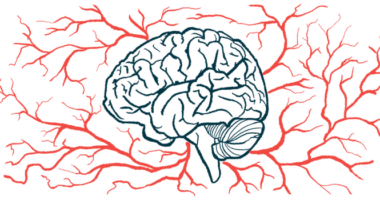Researchers to Study How the Brain Is Affected by Sickle Cell Disease

A research team is conducting two projects to learn more about neurological problems, including cognitive impairment and stroke, in people with sickle cell disease (SCD).
Led by Hyacinth I. Hyacinth, PhD, at the University of Cincinnati, the team will focus on how various anti-inflammatory medications might act to prevent cognitive dysfunction in SCD patients. A second project will examine the mechanisms that leave SCD patients more vulnerable to stroke.
Both studies feed into an overarching goal of Hyacinth’s lab: to better understand racial health disparities in neurological conditions. SCD, a blood disorder that primarily affects people of African ancestry, can lead to a range of neurological symptoms, including stroke and cognitive impairment.
“So a better understanding of why diseases affect populations differently is something that keeps me going,” Hyacinth said in a university press release. “I think if we understand this better then I think we can help people have better lives. That is my fuel every day I wake up: How can I help someone or at least push the boundary further into helping to better understand disease and improve lives.”
SCD patients have high levels of inflammation in the body, which can contribute to a range of disease symptoms. Hyacinth’s team previously found that impairment in cognitive function is strongly correlated with levels of inflammation in the brain.
The team discovered that a medication called minocycline halted or reversed cognitive impairments in animal models of SCD. Minocycline is an antibiotic with a range of immunomodulatory, anti-inflammatory, and neuroprotective effects. It is also thought to be able to cross the blood-brain barrier and reach the brain, where it helps nerve cells connect and mature.
Now, supported by a five-year, $3-million grant from the National Heart, Lung and Blood Institute (NHLBI), the researchers will investigate how minocycline or other related medications act to improve cognition in the blood disorder.
Since minocycline can produce side effects in children, the team will also study the effects of similar anti-inflammatory and neuroprotective medications. In contrast to minocycline, which acts broadly, these other medications have more specific biological targets, which could translate to fewer side effects.
The team hopes to design a pilot clinical trial that will test minocycline in adults with SCD and cognitive impairment.
Meanwhile, the second project will probe how and why people with SCD are at such a markedly increased risk of having a stroke than healthy individuals. Children with SCD are 300 times more likely, and adults 75 times more likely to have a stroke compared with healthy age- and race-matched peers, Hyacinth noted.
“So the question always is the same: How do we get from sickle cell to stroke? A lot of things happen in the middle,” he said.
With an approximately $2.4-million grant from NHLBI, Hyacinth will seek to learn more about how blood vessels in the brain change over time in SCD animal models, and whether these changes may lead to stroke.
People with SCD have high counts of white blood cells, which in part comprise the body’s immune system, that can stick to blood vessels in the brain and potentially cause a stroke, according to Hyacinth.
Research will focus on whether removing certain proteins from white blood cells prevents them from sticking to blood vessels and lowers the risk of stroke.
“If we know that we can reduce the stickiness by taking out these proteins, then we can develop drug targets that target these proteins so that the white cells aren’t as sticky,” Hyacinth said. “And maybe that could help us prevent the development of stroke down the line.”
For Hyacinth, the motivation to study SCD is personal: his nephew has the disease, and both he and his son have sickle cell trait, which occurs when a person has one copy of the sickle cell gene. Individuals with sickle cell trait usually do not have symptoms, but can pass the trait on to their children.








